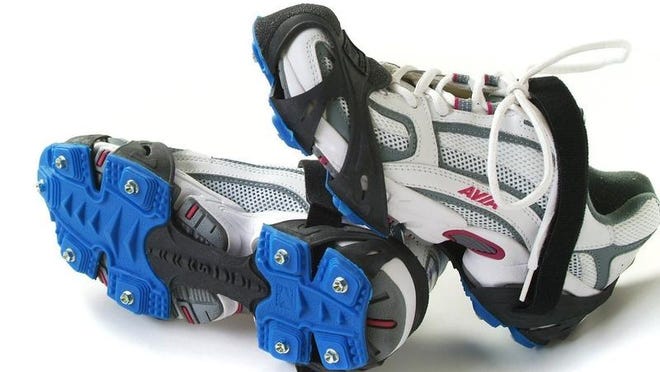It’s almost that time of the year again: winter. The “burrrr” in “Burlington” is back. To stay active, many of us join a gym, take a dance class, or get a yoga mat to do workouts at home. But some brave souls among us are willing to go out and face the elements head-on. Grab your spiked shoes, headband, and gloves — here are some important tips for running in the winter.
Layer up for cold weather runs
As dangerous as it is to be too cold while running, it’s also dangerous to be too hot. The organization RunVermont suggests not leaving the house with clothes that feel too hot, as the body will heat up significantly while running.
“If you overheat when running, you will end up sweating,” writes RunVermont. “That sweat will freeze and you will end up colder and in danger of hypothermia.”
This is why layers are key: they can always be added or removed to adjust to the body’s changing temperature.
![Rev. Dominic Rankin heads down South Feldkamp Avenue on a morning run with temperatures right at zero in Springfield, Ill., Monday, February 15, 2021. “Good, chilly but glad to get out,” said Rev. Rankin of his morning run. “It’s beautiful with the snow.” [Justin L. Fowler/The State Journal-Register]](https://www.gannett-cdn.com/presto/2021/02/15/NSJR/2e409e8a-d1fe-44d2-8f1c-f7a6e557f5ed-ILSPR-02152021-PHOTO-Snow-01.jpg?width=660&height=442&fit=crop&format=pjpg&auto=webp)
Base, bottom and outer layers
Technical shirts, also known as “tech shirts,” can be a good base layer, as they are designed to wick away sweat and not absorb too much moisture, according to the site Runner’s World.
Running jackets and running vests can be good outer layers. RunVermont suggests finding jackets with zippers, so they can be opened up as the body starts to heat up. Jackets with zippers on the armpits are also a big plus.
For the legs, University of Vermont physical therapist Lee Stanton recommends tights, shorts, and depending on the weather, a pair of running pants on the outer layer. For the face, Stanton says a thin layer of Vaseline can “take a little of the sting out of your cheeks.”
Neck gaiters, lined hats, insulated mittens, long socks, hand warmers, and toe warmers can also all be valuable accessories.
Burlington Reddit user Witch-of-Winter starts wearing tights when temperatures dip below 40 degrees, a synthetic beanie below 35 degrees, and gloves below 30 degrees.
Stay visible
It gets darker outside earlier during the winter, which makes it an especially important time for runners to be as visible as possible to traffic. Stanton says a reflective vest will improve visibility, and a headlamp can help prevent tripping on things.
Related tip: “Leave the headphones at home,” writes Burlington Reddit user joeconn4, “You need to be situationally aware!

Running shoes for snow: Don’t slip
Once it starts getting icy out, spiked or studded shoes can help prevent slipping. Slowing down the pace a little can also help if conditions are more icy.
New to Vermont winters?: Here’s how to stay smiling until mud season (even if you don’t ski)





